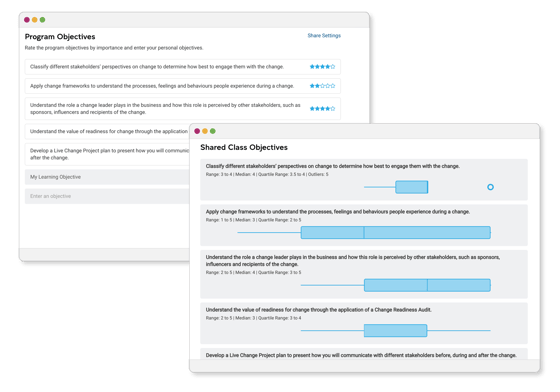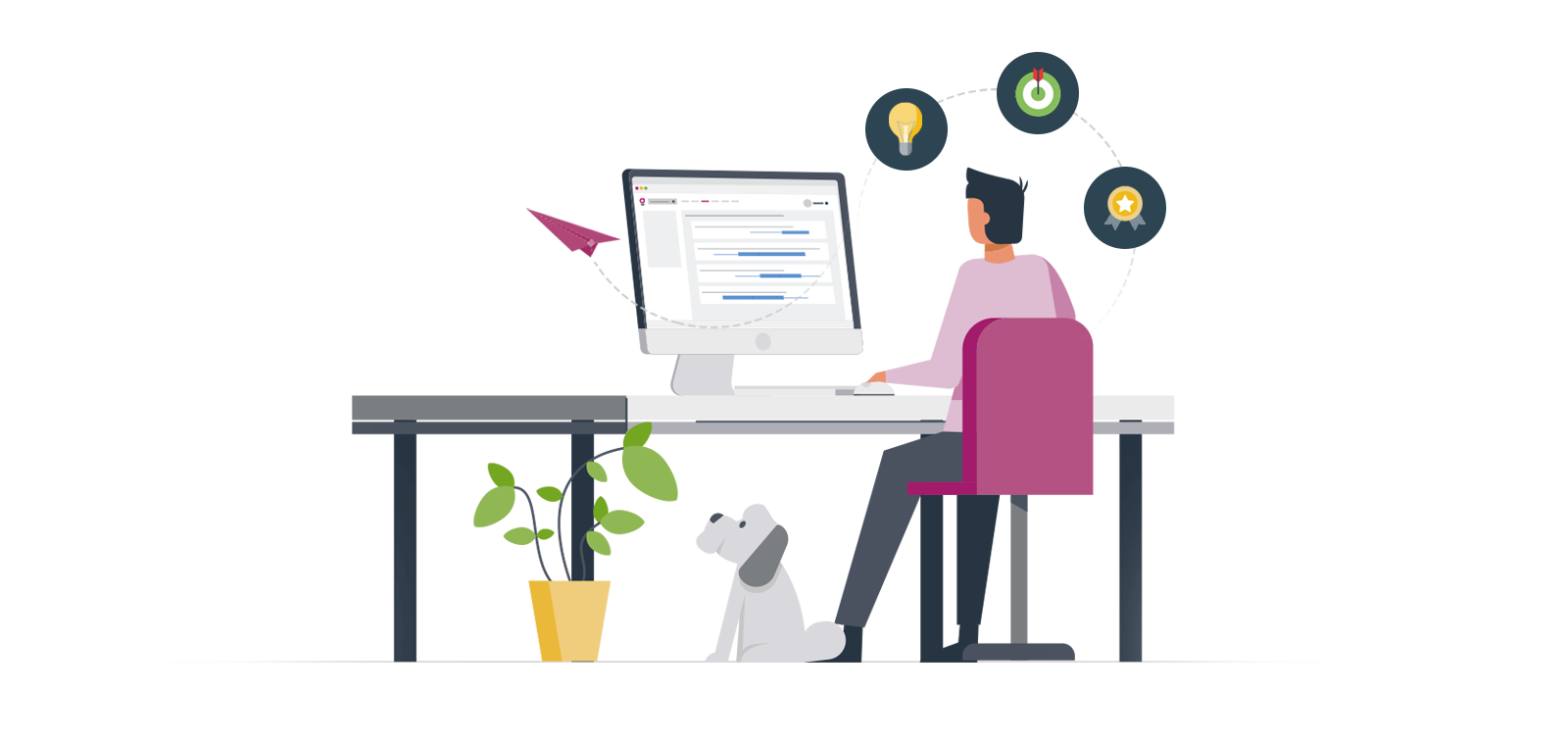In this series of four blogs we look at ways to use “data in the flow of learning” - by which we mean ways to use data to enhance and shape the learning experience in real-time for the learner, as opposed to the still very important use of data in reporting, evaluations and analytics.
In this series we will look at four ways to use data in the flow of learning:
-
Maintaining engagement and focus through personal goal setting
-
Empowering learning relationships through conversation dashboards
In this blog we will explore how to create engagement through the use of personal goal settings. But before we dive into the relationship between goal setting and data in eLearning let’s step back and consider what we mean by engagement, particularly in eLearning. In my view there are really two broad categories of engagement techniques we deploy in eLearning - intrinsic motivators and extrinsic motivators.
Extrinsic motivators have been the hallmark of eLearning design for the last 20 years and include things such as
-
Due dates and reminder emails
-
Scores and pass marks
-
Entertaining animations, videos and interaction design
-
Leaderboards
The reliance on extrinsic motivation techniques came about because initially eLearning was used to deliver training programs that most people didn't actually want to do, such as compliance training. The lack of alignment between the training and what the training means for the learner’s performance in their day to day job.

Over fifteen years later, eLearning is being used so much more broadly across organisations, and for programs that really do drive the day to day performance of businesses and individuals. This presents a great opportunity to engage and encourage learners by appealing to intrinsic motivators, by giving them opportunities to grow and build their competence in areas that are important to them personally. To take full advantage of this opportunity we need to evolve our approach to eLearning design, with feedback and data now potentially playing a big role in how we discover and tap into an individual’s needs and motivations.
Think for a moment about learning goals or objectives. Imagine that we have created or completed an eLearning module where one of the first screens is “The learning objectives of this course are…”, followed by a long list of things that are important to the provider of the learning. All jokes aside, this can be a very informative way of setting the scene - but it isn’t very learner centred and it’s not the most engaging or motivating approach to communicating learning goals.
Contrast that to a simple but effective variation:
“Here are our learning goals for this program, how important are each of these to you? Please rate their importance 1-10.”
Not only is this a much more learner centred way of communicating the information and getting the learner to engage with the material, but it also gives you valuable data about what is important to your learners. You could even take it one step further and ask them what other goals they have that you might not have thought of.

Beyond encouraging the learners to reflect on what the learning is important to them this data can then be used to help drive more effective learning experiences by
-
Personalising the learning pathway based on the learner’s ratings of the different goals
-
Providing this information to facilitators and managers to act as a basis for follow-up conversations with the learner
-
Forming the basis of evaluation of the learning
-
Allowing the learning to be improved to focus on what’s most important to the learners.
While this can most obviously be done at the start of a course or module, feedback from the learner on their goals and objectives can occur throughout learning design through reflective questions and opportunities for the learner to consider how they will make use of the skills they have learned. By gathering feedback from your learners on what aspects of your training they consider to be the most important, you can take advantage of those intrinsic motivators, creating learning that resonates with your learners and drives their development in ways that traditional eLearning can’t hope to compete with.
Have more thoughts on tapping into your learners’ intrinsic motivations? Get in touch – we’d love to discuss the possibilities that better learning data can help unlock.

.png)

